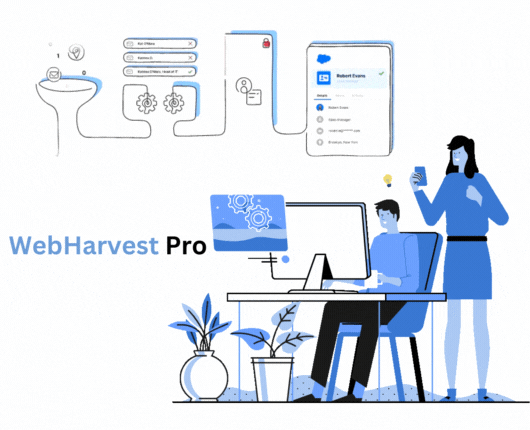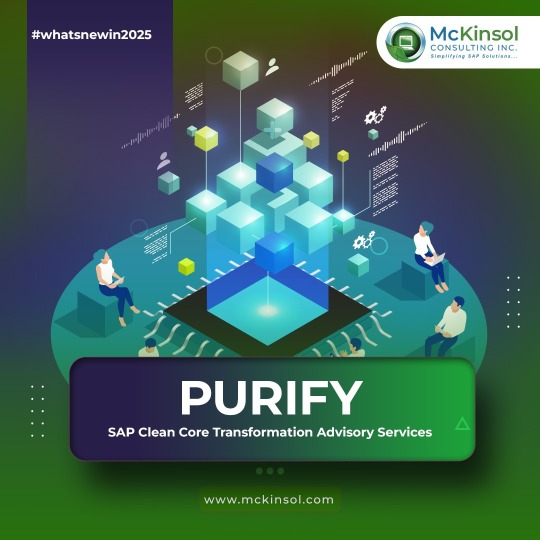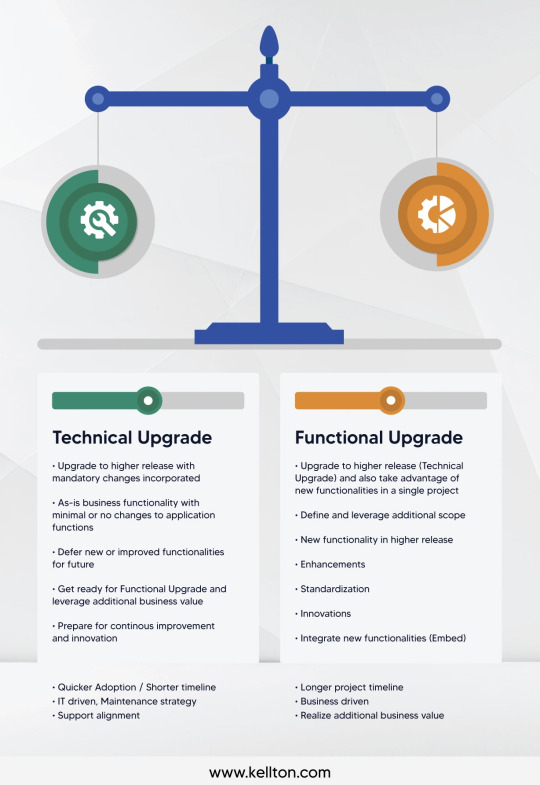#sap implementation
Explore tagged Tumblr posts
Text
sap migration
Overview of SAP migration and its importance
SAP migration is the process of moving all or part of a company's SAP system from one environment to another. This can involve transferring data, applications, and configurations to a new hardware infrastructure or transitioning the system from an on-premises installation to the cloud. The importance of SAP migration cannot be overstated, as it enables organizations to take advantage of new technologies, improve efficiency, and reduce costs.
One key benefit of SAP migration is the ability to leverage updated features and functionalities offered by newer versions of SAP software. As technology advances at a rapid pace, it is crucial for businesses to stay current in order to remain competitive. By migrating their SAP systems, companies can adopt new modules and tools that empower them with improved analytics capabilities, mobile functionality, and integration with other business applications.
Another significant advantage of SAP migration lies in its potential cost savings. Legacy systems require ongoing maintenance and support which incur high expenses over time. Migrating these systems onto modern platforms allows businesses to streamline processes and optimize resource utilization. Moreover, cloud-based migrations provide opportunities for pay-as-you-go models that eliminate upfront capital investments.
What is SAP migration?
SAP migration refers to the process of moving or transitioning data, applications, and other resources from one SAP system to another. As businesses grow and evolve, they may need to upgrade their existing SAP systems to newer versions or migrate their on-premise SAP solutions to cloud-based platforms. The goal of SAP migration is to ensure a seamless transfer of data and functionalities while minimizing disruption to business operations.

One key aspect of SAP migration is the careful planning and preparation required before the actual transition takes place. This includes assessing the existing infrastructure, identifying dependencies, and designing a roadmap for the migration process. It is crucial for businesses to understand that successful SAP migration goes beyond simply transferring data; it involves optimizing processes, mitigating risks, and ensuring compatibility with other systems within the organization.
Another factor worth considering in SAP migration is choosing the right approach. There are various methodologies like greenfield, brownfield, or selective data transition that can be employed based on specific business requirements. Each approach offers unique benefits and challenges that should be evaluated beforehand. Ultimately, embracing modern technologies through effective SAP migration enables organizations to streamline their operations, improve efficiency, increase scalability, and gain a competitive edge in today's fast-paced business landscape
Reasons for SAP migration
Reasons for SAP migration are diverse and varied, but they all share a common goal: to enhance business efficiency and competitiveness. One major driver is the need for modernization. Many organizations still run on outdated legacy systems that struggle to keep up with the pace of technological advances. By migrating to SAP, businesses gain access to state-of-the-art software and tools that can streamline processes, automate tasks, and improve overall productivity.
Another compelling reason for SAP migration is the desire for integration. In today's interconnected world, siloed systems are simply not sufficient to meet the demands of complex business operations. SAP offers a comprehensive suite of applications that seamlessly integrate with each other as well as with third-party systems. This enables companies to consolidate their IT landscape, eliminate data inconsistencies, and enable real-time visibility into key business metrics across departments.
Additionally, cost savings play a significant role in driving organizations towards SAP migration. As businesses grow and scale, so do their IT needs. Maintaining multiple custom-built systems or disparate software solutions can be an expensive endeavor with high maintenance costs and licensing fees. By consolidating everything under one SAP umbrella, companies can achieve economies of scale while benefiting from regular updates and support from a single vendor.
Steps involved in SAP migration process
The process of SAP migration is a complex and critical task that requires careful planning and execution. The first step in this process is to conduct a thorough assessment of the existing system, including hardware, software, and data. This will help identify any gaps or issues that need to be addressed during the migration.
Once the assessment is complete, the next step involves creating a detailed migration plan. This plan should outline the sequence of tasks, resources required, and estimated timelines for each stage of the migration. It is important to involve key stakeholders from various departments to ensure smooth coordination and communication throughout the process.

After finalizing the plan, it's time to prepare the new environment for SAP migration. This includes setting up hardware infrastructure, installing necessary software components, and configuring network connections. Data cleansing and transformation are also essential steps at this stage to ensure that only relevant data is migrated to avoid cluttering or overburdening the new system.
Best practices for successful SAP migration
1. Understanding the Complexity: One of the key best practices for a successful SAP migration is to thoroughly understand the complexity of the task at hand. Migrating an entire system can be a daunting process, and it's important to approach it with a clear plan and realistic expectations. This includes conducting a thorough audit of your current system, understanding its strengths and limitations, and identifying any potential challenges that may arise during migration.
2. Building a Comprehensive Timeline: Another crucial aspect of successful SAP migration is creating a comprehensive timeline that outlines all necessary tasks and milestones. This ensures that everyone involved in the process has a clear understanding of their responsibilities and deadlines. It's important to factor in ample time for testing, troubleshooting, and training to minimize disruptions once the migration is complete.
3. Prioritizing Data Security: Data security should always be top priority when migrating an SAP system. Implementing stringent security measures throughout the entire migration process is vital to ensure that sensitive data remains confidential and protected from external threats. Additionally, having backup systems in place can help mitigate any potential loss or damage during the transition period.
By following these best practices, organizations can maximize their chances of executing a successful SAP migration while minimizing risks associated with data loss, downtime, or other unforeseen issues. With careful planning, adequate resources, and strong collaboration between all stakeholders involved, businesses can seamlessly transition to their new SAP environment without significant disruptions to daily operations.
Conclusion: Importance of proper planning and execution
Proper planning and execution are crucial elements for success in any endeavor. Whether you are running a business or embarking on a personal project, having a well-thought-out plan and executing it efficiently can make all the difference. SKYPER BUSINESS SOLution recognizes the significance of these two aspects and offers comprehensive tools to streamline your planning and execution processes.

One of the key reasons why proper planning is important is that it allows you to set clear goals and objectives. When you have a concrete plan in place, you can prioritize tasks, allocate resources effectively, and stay focused on what needs to be achieved. SKYPER BUSSINESS SOLution provides innovative features that enable users to create detailed action plans with specific milestones and deadlines, ensuring accountability throughout the process.
Furthermore, effective execution is equally essential for turning your plans into reality. Without efficient implementation, even the most well-crafted plan can fall flat. With SKYPER BUSSINESS SOLutions user-friendly interface and advanced tracking capabilities, you can monitor progress in real-time, identify potential bottlenecks early on, and make necessary adjustments swiftly. This level of visibility not only enhances productivity but also helps maintain motivation among team members by showcasing their accomplishments along the way.
2 notes
·
View notes
Text
SAP Business Consulting Services
SAP Business Consulting Services offered by kulsys help businesses optimize their processes, improve efficiency, and achieve their strategic goals using SAP solutions.
3 notes
·
View notes
Text
Understanding the Core Features of SAP ERP Solutions
In today’s competitive business landscape, companies need efficient, scalable, and integrated systems to manage operations seamlessly. SAP ERP Solutions stands out as one of the most robust enterprise resource planning tools available, offering a comprehensive suite to streamline business processes across departments.
Whether you’re a startup or an established enterprise, understanding the core features of SAP ERP Solutions is key to leveraging its full potential—especially when preparing for a smooth SAP Implementation.
What Are SAP ERP Solutions?
SAP ERP Solutions refer to the integrated software offered by SAP SE that helps businesses automate, monitor, and manage core activities such as finance, supply chain, human resources, and customer relationship management. It is designed to bring all your data into a single, unified platform, ensuring transparency and efficiency.
Core Features of SAP ERP Solutions
1. Financial Management
SAP ERP provides powerful tools for managing financial operations including accounting, financial reporting, asset management, and risk analysis. Real-time data access improves decision-making and compliance.
2. Supply Chain & Inventory Management
With SAP ERP, businesses can manage their supply chain in real-time—from procurement and inventory tracking to order fulfillment. It enhances visibility and reduces operational bottlenecks.
3. Human Capital Management
From payroll to performance tracking, SAP ERP supports comprehensive HR functions. It automates time-consuming tasks and empowers employees with self-service tools.
4. Customer Relationship Management (CRM)
Integrated CRM features help manage leads, track customer interactions, and optimize sales strategies—ultimately enhancing customer satisfaction and retention.
5. Production Planning and Manufacturing
Manufacturing businesses benefit from tools that plan production schedules, track raw materials, and manage product life cycles—ensuring on-time delivery and cost-efficiency.
6. Analytics and Reporting
SAP ERP Solutions come equipped with advanced reporting and data visualization features. Real-time dashboards and predictive analytics help businesses stay ahead of the curve.
Why SAP Implementation Matters
A successful SAP Implementation is crucial to fully benefit from the system's capabilities. It involves planning, customization, data migration, testing, and user training. Partnering with certified SAP consultants can ensure a smoother transition and better ROI.
Benefits of Implementing SAP ERP Solutions
Improved Productivity: Automation of routine tasks saves time and minimizes errors.
Real-Time Insights: Access to live data supports faster and better decision-making.
Scalability: Easily adapt to business growth with modular add-ons.
Compliance: Ensure industry and government regulations are met effortlessly.
Cost Efficiency: Streamlined operations lead to reduced overhead costs.
Conclusion
SAP ERP Solutions offer businesses a powerful tool to unify and manage their operations effectively. From finance to customer relations, its core features provide unmatched integration and efficiency. To make the most of it, investing in a strategic and well-managed SAP Implementation is essential.
If you're considering adopting SAP ERP in your organization, now is the time to explore its full capabilities and set your business on the path to digital transformation.
#SAP ERP Solutions#SAP Implementation#SAP S/4HANA implementation in India#SAP S/4HANA implementation
0 notes
Text

0 notes
Text

Accelon Technologies is your trusted SAP Business One Partner in Delhi, helping businesses simplify operations, enhance efficiency, and drive growth. Our expert team specializes in SAP Business One implementation, customization, and support to ensure seamless integration with your business processes. Whether you need ERP consulting, data migration, or industry-specific solutions, we tailor SAP Business One to meet your unique needs. With real-time insights, automation, and streamlined workflows, we empower businesses to make informed decisions and stay competitive.
#SAP Business One#SAP Business One Partner#SAP Business One Delhi#ERP Software#Business Automation#SAP Partner Delhi#Accelon Technologies#ERP Consulting#Business Growth#Enterprise Solutions#SAP Implementation#Cloud ERP#Small Business ERP#SAP Customization#Digital Transformation
1 note
·
View note
Text
SAP Clean Core Strategy in USA: Purify.io by McKinsol

In the fast-evolving world of enterprise resource planning (ERP), maintaining a clean and optimized system core is essential for businesses striving for agility and innovation. McKinsol Consulting Inc. introduces Purify.io, a groundbreaking solution designed to streamline SAP clean core strategies in the USA, enabling organizations to achieve seamless transformations and future-proof their operations.
Understanding SAP Clean Core
The SAP clean core approach focuses on minimizing customizations in the core ERP system, leveraging standard SAP functionalities, and utilizing the SAP Business Technology Platform (Clean Core SAP BTP) for extensions and integrations. This methodology ensures:
Reduced technical debt
Easier upgrades and migrations
Enhanced system performance
Accelerated innovation cycles
Purify.io acts as a catalyst for adopting this strategy, providing businesses with a structured framework to implement and sustain a clean core.
Challenges of Traditional ERP Systems
Organizations often face significant challenges with legacy ERP systems, including excessive customizations, complex integrations, and costly maintenance. These challenges hinder digital transformation and scalability. McKinsol’s ERP clean core solutions address these pain points, ensuring businesses stay competitive in the digital era.
Key Features of Purify.io
Purify.io is tailored to meet the diverse needs of organizations in the USA, offering a range of features that simplify the journey to a clean core:
Custom Code Analysis: Identifies and eliminates redundant customizations.
SAP Clean Core Integration: Seamlessly integrates with SAP BTP to extend functionalities without touching the core.
Automated Transformation Tools: Accelerates the clean core transformation process with minimal disruptions.
Ongoing Compliance Monitoring: Ensures the system remains aligned with SAP’s best practices.
Benefits of SAP Clean Core Transformation
Adopting the SAP clean core strategy with Purify.io unlocks several benefits:
Simplified Upgrades: Clean core systems are easier and faster to upgrade, ensuring compatibility with the latest SAP innovations.
Cost Efficiency: Reduces maintenance and operational costs by eliminating unnecessary customizations.
Agility and Flexibility: Enables businesses to respond swiftly to market demands by leveraging standard SAP capabilities.
Enhanced Innovation: Facilitates the adoption of cutting-edge technologies through SAP BTP extensions.
SAP Clean Core Transformation Advisory Services
McKinsol’s SAP clean core transformation advisory services provide expert guidance throughout the transformation journey. Our team works closely with organizations to:
Assess the current state of their ERP systems
Develop a customized clean core strategy
Implement Purify.io tools and methodologies
Provide ongoing support and optimization
Why Choose McKinsol for SAP Clean Core in the USA?
McKinsol Consulting Inc. stands out as a trusted partner for businesses aiming to embrace the clean core philosophy. With years of expertise in SAP consulting and a deep understanding of industry-specific challenges, McKinsol ensures:
Tailored solutions for unique business needs
Proven methodologies and best practices
A customer-centric approach to transformation
Conclusion
The SAP clean core strategy is no longer a choice but a necessity for businesses seeking long-term success in the digital age. With Purify.io, McKinsol empowers organizations across the USA to streamline their SAP landscapes, drive innovation, and achieve operational excellence.
Embrace the future of ERP with McKinsol and Purify.io—your trusted partners in clean core transformation. Let’s build a smarter, more agile business together.
0 notes
Text
How Does SAP S/4HANA Transform Modern Businesses?
In today's fast-paced digital world, businesses are increasingly looking for efficient and scalable solutions to stay competitive. One question that resonates across industries is: How does SAP S/4 HANA revolutionize modern business operations? In this blog, we explore how SAP S/4HANA, along with SAP ERP, is transforming businesses worldwide by improving processes, increasing productivity, and driving innovation.
Understanding SAP S/4HANA and SAP ERP
SAP S/4HANA is the next-generation business suite that leverages in-memory computing to process data faster and more efficiently. It simplifies business processes and provides real-time insights, helping companies make data-driven decisions. On the other hand, SAP ERP is a robust enterprise resource planning system that integrates key business functions, such as finance, HR, and supply chain, into a unified platform.
Together, these solutions offer unparalleled flexibility and agility, enabling businesses to adapt to rapidly changing market conditions.
Why Businesses Are Migrating to SAP S/4 HANA
Real-Time Analytics: With SAP S/4 HANA India, companies can analyze massive volumes of data in real time, offering actionable insights for strategic planning.
Enhanced User Experience: The SAP Fiori interface simplifies navigation and ensures a seamless user experience.
Scalability and Flexibility: As businesses grow, SAP S/4 HANA Implementation provides scalable solutions to meet increasing demands.
Cost Efficiency: By automating repetitive tasks and optimizing processes, businesses save time and reduce operational costs.
For more details about its features and benefits, visit SAP S/4 HANA Public Cloud.
How SAP ERP Complements SAP S/4 HANA
SAP ERP serves as the backbone of enterprise operations, integrating critical functions across departments. When paired with SAP S4HANA, it enhances operational efficiency by providing:
Streamlined workflows
Comprehensive reporting
Improved collaboration between teams
This synergy empowers businesses to deliver value to their customers more effectively.
FAQs
1. What is the difference between SAP S/4 HANA and SAP ERP? SAP S/4HANA is the advanced version of SAP ERP, offering enhanced performance through in-memory computing and real-time analytics.
2. Can small businesses benefit from SAP S/4 HANA? Yes, SAP S/4HANA’s scalable solutions are suitable for businesses of all sizes, helping them adapt to market demands.
3. Is it challenging to migrate from SAP ERP to SAP S/4HANA? Migration requires planning and expertise, but it is worth the effort for the long-term benefits it provides. Partnering with experienced consultants can make the transition smoother.
Conclusion
SAP S/4HANA and SAP ERP are game-changers for businesses aiming to innovate and grow. By adopting these technologies, companies can unlock their true potential and achieve unparalleled efficiency. Explore more about these solutions and their impact on businesses by visiting Softwin Technologies.
Are you ready to transform your business with SAP solutions? Start your journey today!
#SAP S/4HANA#SAP ERP#SAP Cloud ERP#SAP S/4HANA ERP Solutions#SAP S/4HANA implementation#SAP ERP Solutions#SAP Implementation#SAP S/4HANA implementation in India
0 notes
Text
Understand the key differences between SAP consulting and SAP implementation services. Explore how consulting focuses on strategy and planning, while implementation services handle the technical aspects of deploying and integrating SAP solutions into your business.
#SAP consulting#SAP implementation#SAP services#SAP integration#business software#SAP strategy#ERP consulting#SAP deployment.
0 notes
Text
Streamlining Business Processes with SAP Implementation
Introduction
In today's fast-paced business environment, staying ahead of the competition requires more than just hard work—it requires smart work. One of the most effective ways to enhance your organization's efficiency is through SAP (Systems, Applications, and Products) implementation. SAP is a powerful enterprise resource planning (ERP) software that integrates various business processes into a unified system, allowing for improved decision-making and streamlined operations. In this article, we will explore the benefits of SAP implementation, the steps involved in the process, and how it can transform your business.
1. Understanding SAP Implementation
SAP implementation is the process of deploying SAP ERP software to manage an organization's business operations. It involves customizing the software to meet the specific needs of the business, integrating it with existing systems, and ensuring that employees are trained to use it effectively. The goal is to create a centralized system where all departments can access and share data, leading to improved collaboration and more informed decision-making.
The implementation process typically includes phases such as project preparation, business blueprinting, realization, final preparation, and go-live support. Each phase is crucial to ensure that the system is tailored to the organization's unique requirements and is fully functional before going live.
2. Key Benefits of SAP Implementation
Implementing SAP can bring a host of benefits to your business, including:
Enhanced Data Management: SAP allows for the centralization of data, reducing redundancy and ensuring that all departments have access to accurate and up-to-date information.
Improved Efficiency: By automating routine tasks and integrating various business processes, SAP reduces manual work and minimizes errors, leading to increased operational efficiency.
Better Decision-Making: With real-time data at your fingertips, SAP enables managers to make informed decisions quickly, improving overall business agility.
Cost Savings: While the initial investment in SAP implementation can be significant, the long-term cost savings from increased efficiency, reduced errors, and better decision-making can be substantial.
Scalability: As your business grows, SAP can easily scale to accommodate new processes, making it a flexible solution for long-term success.
3. Steps Involved in SAP Implementation
Successfully implementing SAP involves several key steps:
Project Preparation: This initial phase involves planning the project, defining the scope, and assembling the implementation team. It is crucial to set clear goals and timelines to ensure the project stays on track.
Business Blueprinting: During this phase, the implementation team works with stakeholders to understand the current business processes and define how they will be mapped to the SAP system. This blueprint serves as a guide for the rest of the implementation.
Realization: In the realization phase, the SAP system is configured according to the business blueprint. This includes customizing the software, integrating it with existing systems, and performing initial testing.
Final Preparation: Before going live, the system undergoes rigorous testing to ensure everything is working as expected. This phase also includes end-user training to ensure employees are ready to use the new system.
Go-Live and Support: Once everything is in place, the system goes live, and the business begins using it in its day-to-day operations. Post-implementation support is crucial during this phase to address any issues and ensure a smooth transition.
4. Overcoming Challenges in SAP Implementation
While SAP implementation offers many benefits, it also comes with its challenges. Common issues include resistance to change from employees, data migration difficulties, and the complexity of the system itself. To overcome these challenges, it is essential to:
Involve Stakeholders Early: Engaging key stakeholders from the beginning can help gain buy-in and reduce resistance to change.
Focus on Training: Comprehensive training programs for end-users are critical to ensure they understand how to use the new system effectively.
Plan for Data Migration: Data migration can be a complex process, so it is important to plan thoroughly and ensure data accuracy.
Seek Expert Help: Partnering with experienced SAP consultants can help navigate the complexities of implementation and ensure a successful outcome.
5. Why Choose Ameri100 for SAP Implementation?
When it comes to SAP implementation, choosing the right partner is crucial for success. Ameri100 is a leading provider of SAP services, offering a comprehensive range of solutions tailored to meet the unique needs of your business. With a team of experienced consultants and a proven track record of successful implementations, Ameri100 ensures a smooth transition to SAP, minimizing disruptions to your operations and maximizing the benefits of the new system.
Our approach is customer-centric, focusing on understanding your business needs and delivering solutions that drive real value. Whether you are a small business or a large enterprise, Ameri100 has the expertise to help you achieve your goals with SAP.
CTA
Ready to transform your business with SAP? Contact Ameri100 today to learn how our expert team can help you streamline your operations, improve efficiency, and drive growth. Let us take your business to the next level with SAP implementation.
0 notes
Text
Finding the Right SAP Implementation Partner for Your Business
An SAP implementation partner is a company that helps businesses implement SAP solutions, ensuring the software is customized to meet the specific needs of the organization. These partners provide a range of services, including project management, system configuration, data migration, user training, and post-implementation support. The right partner will guide you through the entire process, ensuring that the SAP solution is integrated seamlessly into your business operations.
Visit here:-
0 notes
Text
SAP Implementation and Methodology Services
0 notes
Text
Whether you're a small business or a large enterprise, SAP SuccessFactors can help you transform your HR function and drive better business outcomes. With its user-friendly interface, robust features, and proven track record, SAP SuccessFactors is the ideal solution for organizations looking to take their people management to the next level.
0 notes
Text
Future-Proofing Indian Businesses with SAP S/4HANA Implementation
Introduction
In today's fast-evolving digital landscape, Indian businesses need robust and scalable enterprise solutions to stay competitive. SAP S/4HANA implementation in India has emerged as a game-changer, helping organizations streamline operations, enhance productivity, and drive digital transformation. This blog explores how SAP S/4HANA implementation can future-proof businesses, its benefits, and key steps for a successful transition.
Why Indian Businesses Need SAP S/4HANA Implementation
With increasing market competition and evolving customer expectations, traditional ERP systems are no longer sufficient. SAP S/4HANA implementation in India offers:
Real-time Data Processing: Helps businesses make data-driven decisions instantly.
Seamless Integration: Connects different departments for enhanced collaboration.
Cloud and On-Premise Flexibility: Businesses can choose deployment models that suit their needs.
Advanced Analytics & AI Capabilities: Enables predictive analysis and automation.
Scalability & Compliance: Adapts to growing business needs while ensuring regulatory compliance.
Key Benefits of SAP S/4HANA Implementation in India
Enhanced Business EfficiencyWith real-time analytics and automation, SAP S/4HANA implementation reduces manual tasks, improves operational efficiency, and speeds up business processes.
Cost Optimization By migrating to SAP S/4HANA, businesses can optimize costs by eliminating redundant IT infrastructure and improving resource allocation.
Improved User ExperienceThe intuitive SAP Fiori interface ensures ease of use, reducing training time and increasing employee productivity.
Better Decision-MakingAI-powered insights enable businesses to make strategic decisions faster, leading to improved financial and operational performance.
Seamless Industry AdaptationFrom manufacturing and retail to healthcare and finance, SAP S/4HANA implementation can be customized for various industries, making it a versatile choice for Indian businesses.
Steps for a Successful SAP S/4HANA Implementation in India
To ensure a smooth transition, follow these key steps:
Assess Business Needs: Identify current challenges and define clear implementation goals.
Choose the Right Deployment Model: Decide between on-premise, cloud, or hybrid models based on business requirements.
Data Migration & System Integration: Ensure seamless transfer of legacy data to SAP S/4HANA with minimal disruptions.
Customization & Testing: Configure the system to align with business processes and conduct rigorous testing.
Employee Training & Change Management: Educate teams on new processes and encourage adoption.
Go-Live & Continuous Monitoring: Monitor performance post-implementation and optimize processes continuously.
Challenges in SAP S/4HANA Implementation and How to Overcome Them
While SAP S/4HANA implementation in India offers numerous benefits, businesses may face challenges such as:
High Initial Investment → Solution: Plan phased implementation to manage costs.
Resistance to Change → Solution: Provide training and change management support.
Data Migration Complexities → Solution: Use automated tools and expert consultants for seamless transition.
Conclusion
The SAP S/4HANA implementation in India is transforming businesses by offering agility, efficiency, and future-ready solutions. Whether you are a startup or an established enterprise, adopting SAP S/4HANA implementation can help you stay ahead in the digital era.
If your business is considering the transition, now is the perfect time to start.

#sap implementation#sap s/4hana implementation#sap s/4hana implementation in india#sap s/4hana erp solutions
0 notes
Text

Discover the best practices and tips for a successful SAP software solutions implementation. Maximize efficiency and minimize challenges with this comprehensive guide.
#SAP software solutions#ERP systems#business automation#enterprise software#data management#cloud ERP#SAP implementation#digital transformation#custom SAP solutions#business intelligence
0 notes
Text
0 notes
Text
Choosing the Right iDMX Implementation Partner: McKinsol Consulting Inc.

iDMX Implementation Partner
In today’s data-driven world, businesses are more reliant than ever on efficient data management to gain insights, meet compliance standards, and drive growth. Intelligent Data Management Express, or iDMX, offers a powerful solution to manage, govern, and utilize data effectively. However, implementing iDMX requires specialized expertise to ensure it aligns with business objectives and delivers maximum value. As a leading iDMX implementation partner, McKinsol Consulting Inc. provides the technical knowledge and industry experience needed to deploy and optimize iDMX for long-term success.
Why an Experienced iDMX Implementation Partner is Essential
Implementing iDMX can transform how businesses handle and leverage data, but without the right guidance, the process can be complex and time-consuming. Choosing an experienced iDMX implementation partner ensures that your organization benefits from a streamlined, efficient deployment that meets your specific needs. McKinsol Consulting Inc., headquartered in New Jersey, offers end-to-end iDMX implementation services designed to help businesses maximize the value of their data management investments.
Key Benefits of Partnering with McKinsol Consulting Inc. for iDMX Implementation
Customized iDMX Solutions Aligned with Business Goals At McKinsol, we recognize that every business has unique data requirements. Our approach to iDMX implementation begins with an in-depth assessment of your organization’s data management needs and objectives. By understanding your goals, we design customized iDMX solutions that align with both your short-term priorities and long-term growth plans.
Efficient Deployment and Integration Implementing iDMX involves integrating new technology with existing systems and workflows. As a trusted iDMX implementation partner, McKinsol Consulting Inc. ensures seamless integration, minimizing disruptions and enabling a smooth transition. Our expert team handles every step, from initial setup to configuring custom workflows, making it easy for businesses to adopt iDMX quickly and effectively.
Enhanced Data Governance and Compliance Effective data governance is essential for regulatory compliance and data security. iDMX provides robust tools to manage data policies, monitor compliance, and protect sensitive information. McKinsol’s iDMX implementation services focus on establishing strong data governance frameworks, helping businesses maintain regulatory standards, secure data, and reduce risk.
Why McKinsol Consulting Inc. is the Ideal iDMX Implementation Partner
Choosing the right iDMX implementation partner can have a significant impact on the success of your data management strategy. McKinsol Consulting Inc. stands out due to our extensive industry experience, technical expertise, and commitment to client success. Our team is dedicated to delivering results that drive business growth, data accuracy, and operational efficiency.
What Makes McKinsol Consulting Inc. Unique?
Deep Industry Expertise McKinsol Consulting Inc. has a proven track record in industries such as fashion, retail, manufacturing, and pharmaceuticals. Our industry-specific knowledge allows us to design iDMX solutions that meet unique business requirements and regulatory standards. By understanding the challenges faced by each industry, we provide clients with iDMX implementations that support both compliance and innovation.
Ongoing Support and Optimization Implementing iDMX is just the beginning. As a dedicated iDMX implementation partner, McKinsol offers continuous support, ensuring that your data management system remains efficient and up-to-date. Our team works closely with clients to monitor system performance, resolve issues, and make optimizations as needed, allowing you to focus on core business activities without worrying about data management challenges.
Tailored Training and User Adoption For any data management solution to succeed, user adoption is key. McKinsol Consulting Inc. provides comprehensive training sessions tailored to your team’s needs, ensuring that all users are comfortable and proficient with iDMX. Our goal is to equip your team with the skills they need to leverage iDMX effectively, maximizing return on investment.
The McKinsol Advantage: Transforming Data into Business Value
By partnering with McKinsol Consulting Inc. for iDMX implementation, businesses gain a strategic ally in their data management journey. iDMX enables organizations to improve data accuracy, enhance governance, and streamline operations, creating a solid foundation for data-driven decision-making. With McKinsol’s expertise, businesses can confidently navigate the complexities of data management, unlocking new insights and opportunities along the way.
Start Your iDMX Journey with McKinsol Consulting Inc.
Whether your organization is looking to improve data governance, achieve compliance, or streamline data processes, choosing McKinsol Consulting Inc. as your iDMX implementation partner can make all the difference. Our team of skilled consultants is ready to guide you through every stage of the iDMX deployment, helping you harness the power of data management for competitive advantage.
Contact McKinsol Consulting Inc. today to discover how our tailored iDMX solutions can support your business in achieving its data management and growth objectives. Together, we’ll build a data strategy that powers success.
0 notes